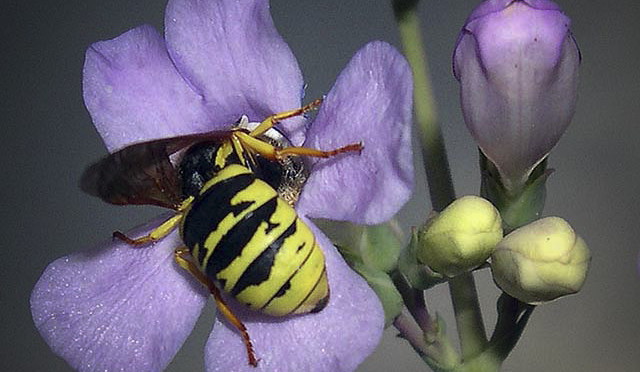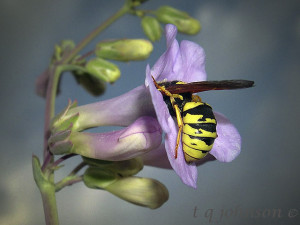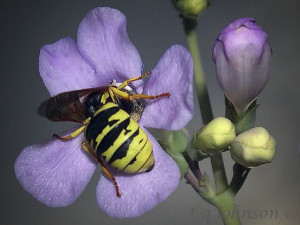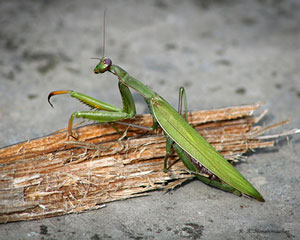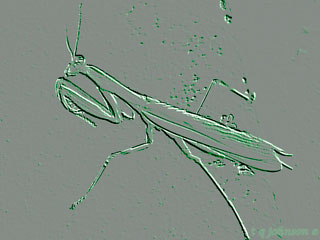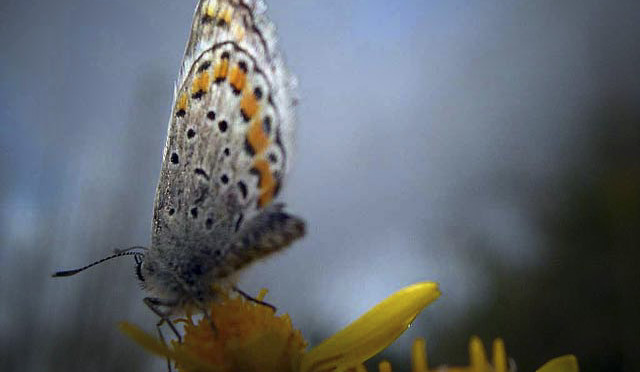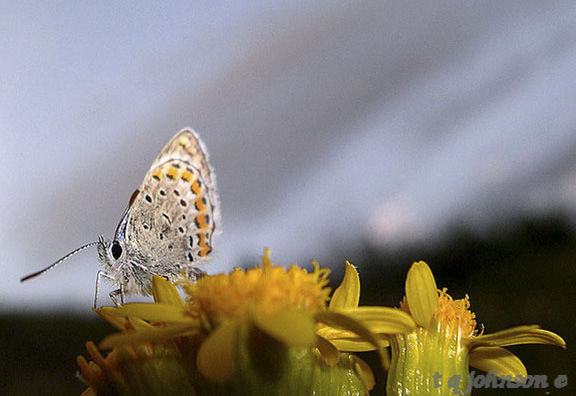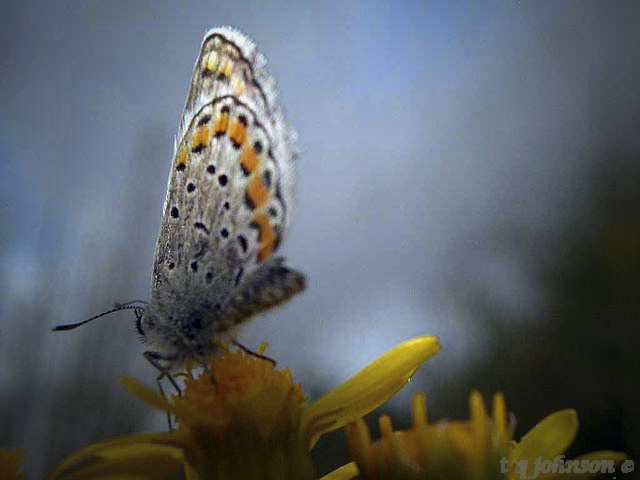Class: Insecta
Order: Hymenoptera
Family: Vespidae (Paper Wasps, Yellow Jackets, Hornets etc:)
These stories of ancient rock are only part of Red Rocks’ ecological richness. The park is also home to vibrant modern-day life, including members of Class Insecta, Order Hymenoptera, and Family Vespidae—commonly known as paper wasps, yellow jackets, and hornets.
The buzzing sound of a wasp’s wings evokes an instinctive reaction—an ancient signal of alertness embedded deep in our biology. Their bright coloration serves as a warning: respect their presence or risk the sting. This evolutionary trait, called aposematism, is a powerful survival mechanism shared by many insects.
At Red Rocks, one might observe a solitary wasp feasting on a One-Sided Penstemon, one of many native wildflowers. These plants serve as both a feeding ground and supply depot for local insect architects. Oblivious to a camera’s flash, these wasps continue their essential work of pollination and nest-building, providing a window into the balance of nature.
In North America, there are approximately 325 species of Vespidae. Some are solitary, while others are social—with queens, workers, and males dividing labor in intricate colonies. Social wasps build paper nests from chewed plant fibers, often mixing in mud or wood pulp. These nests are typically seasonal in temperate climates, with only the queen surviving winter to start the next generation.
Whether through ancient stone or living insect, Red Rocks Park offers an extraordinary view into the interconnectedness of life and land. From billion-year-old metamorphic rock to the hum of a modern wasp’s wing, the park stands as a dynamic classroom for scientists, naturalists, and curious visitors alike.

